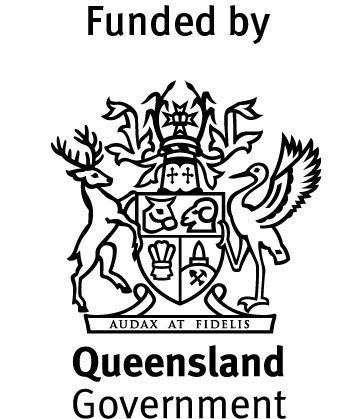

This project was commissioned by Tenants Queensland to help plan the delivery of tenant advice services by the Queensland Statewide Tenant Advice and Referral Service (QSTARS).
The project defines 'rental vulnerability' as the vulnerability of persons to problems that may make their rental housing unaffordable, insecure or inappropriate, and which therefore indicates a need for tenant advice.
Thirteen indicators of rental vulnerability are identified, in two broad groups: 'housing indicators' and 'people indicators'.
All the indicators were subject to a principal component analysis to create the rental vulnerability index (RVI). Each of the indicators is also mapped separately.
Click here for more information and methodology.
The analysis of the data and mapping was undertaken and produced by Laurence Troy and Chris Martin, City Futures Research Centre.
The QSTARS programs is managed by Tenants Queensland and funded by the Queensland Department of Housing and Public Works.
Funding for the project was provided by the Queensland Government.

Rental bond data sourced from Residential Tenancies Authority, Queensland.
Social housing, residential services and manufactured home sites data were sourced from the Queensland Government's open data portal.
Other population and housing statistics were sourced from Australian Bureau of Statistics, Census of Population and Housing 2011 and 2016.
ABS Average Weekly Earnings were used to adjust Census incomes data for affordability indicators (2012 to 2015).
Affordability and rent stress layers were produced by Laurence Troy and Chris Martin, City Futures Research Centre, UNSW Sydney.
Rental Vulnerability Index (RVI) was produced by Laurence Troy and Chris Martin. Full details of the methodology can be found here.
The Rental Vulnerability Index (RVI) is based on a principle component analysis (PCA) of the housing and people indicators across all Queensland postcodes (see menus above). The PCA scores for each postcode were ranked to produce an index rank of rental vulnerability, from high vulnerability (1, dark red) to low vulnerability (0, pale yellow).
Select a postcode from the map or search the menu below to display individual index scores.
The housing indicators of rental vulnerability are rental housing market factors, such as affordability factors (rental stress and available affordable rentals) and tenures associated with disadvantage (social housing, residential services and manufactured homes). The maps show the prevalence of each factor in each Queensland postcode.
Also shown are the total rental bonds lodged (indicating the number of private tenancies), new rental bonds lodged (indicating activity in the private rental market) and median rents for each Queensland postcode area. (These are not indicators of rental vulnerability for the purposes of the RVI.)
Select a postcode from the map or search the menu below to display housing indicator data.
Rental Dwellings and proportion of stock based on 2016 Census of Population and Housing (28.1% for all Queensland)
Median Rent based on new bonds lodged during the 2016 calendar year ($350 for all Queensland)
Number and proportion of renters in Rent Stress based on 2016 Census of Population and Housing (30% for all Queensland)
Proportion of Tenancies Affordable to median renter households based on new bonds lodged in 2016 (55% for all Queensland)
Tenancy Disputes lodged with the Residential Tenancies Authority in 2016 (4.6% of bonds for all Queensland)
Social and Community Dwellings as of June 2016, based on data from Queensland Report on Goverment Services
Residential Services registered with the Department of Housing and Public Works as of July 2017 (max residents)
Residential parks with Manufactured Homes recorded with the Department of Housing and Public Works as of July 2017
Tenure Mix based on place of enumeration profile of 2016 Census of Population and Housing
The people indicators of rental vulnerability are personal or household characteristics, conditions or circumstances, such as disability, unemployment and low education. The maps show the prevalence of each factor among tenant households in each Queensland postcode area.
Also shown is the proportion of tenant households that speak languages other than English at home in each Queensland postcode area. (This is not an indicator of rental vulnerability for the purposes of the RVI.)
Select a postcode from the map or search the menu below to display people indicator data.
Total Tenants based on 2016 Census
Younger Tenants (15 to 24) and proportion of tenant population based on 2016 Census (17.4% for all Queensland)
Older Tenants (65 and over) and proportion of tenant population based on 2016 Census (6.5% for all Queensland)
Unemployment Rate of tenants based on 2016 Census (11.3% for all Queensland)
Single Parent Households and proportion of renter households based on 2016 Census (18.0% for all Queensland)
Low Education (highest level year 10) and proportion of renters 15 years and over based on 2016 Census (32.9% for all Queensland)
Tenants in Need of Assistance and proportion of renters based on 2016 Census (5.0% for all Queensland)
Indigenous Tenants and proportion of renters based on 2016 Census (8.0% for all Queensland)
Tenants speaking Languages Other Than English at home based on 2016 Census (15.9% for all Queensland)
City Futures Research Centre is located on the unceded coastal land of the Bidjigal people of the Eora Nation. City Futures Research Centre acknowledges the Traditional Owners and pays respect to Elders past and present. City Futures Research Centre recognises that First Nations people are a living part of the oldest continuous existing culture on earth and have been stewards of the natural environment upon which we now learn and work.
